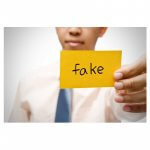Have you ever been accused of selling inauthentic goods on Amazon? If so, then your account may have been suspended, and your funds blocked. We have some straightforward solutions for you to get back in Amazon’s good graces, and to avoid such situations in the future.
For advice on how to reinstate your account or avoid a suspension, continue reading.
Previously in the series, we discussed what happens when you break condition guidelines, have poor performance metrics, or own multiple seller accounts. These are some of the most common reasons for warnings or account suspensions. But perhaps the most controversial type of suspension happens when either a customer, a manufacturer or another seller claims your items are inauthentic. When that happens, we recommend that you go through steps A- C below:
1. Check your Amazon account
To find out what could have led to your suspension, you need to retrace your steps, checking every aspect of your recent activity that’s likely to be flagged, and to catch an Amazon bot’s eye.
An Amazon robot will:
- filter product reviews and seller feedback;
- read customers’ A-to-Z claims for keywords;
- scan condition notes, product descriptions, titles and info available in bullet point lists;
- check the reasons that customers writing to you select from the drop-down-list and their messages as such
…and so should you.
Anything that’s an exact match to a blacklisted phrase, even if it’s not used with the same meaning or purpose, triggers a warning. Phrases like ‘not fake’, ‘not inauthentic’, ‘not a tester’, ‘not a sample’ etc., are good examples of unintentional triggers.
2. Check for ulterior motives
Customers and other sellers can become convinced that you’re selling inauthentic goods, and complain to Amazon before writing to you, even though they have no personal interest in harming your business. Occasionally, buyers will think that simply because an item doesn’t have the original factory packaging, or if it’s missing some booklets, inserts, supplements or parts, then it must be fake. Also, some buyers simply expect more from original products, in terms of functionality – for speakers to be louder, buttons to last longer, etc. – , and think they’re knockoffs if they don’t meet their expectations.
It’s not unheard of for competitors selling inauthentic items to complain to Amazon about sellers who have genuine items to sell, because they’re oblivious to what they have in their warehouse. That being said, if you suspect foul play, do a background check on your complainant, and report to Amazon with proof.
3. Check content guidelines and the anti-counterfeiting policy
Amazon clearly states that it does not allow counterfeit, pirated and unauthorized replicas, unpublished scripts, content copied and transferred to a different format, compilations, inauthentic accessories, software duplicates or knockoffs to be sold, among others. Your account may be suspended or terminated, your FBA inventory disposed of and your funds withheld in the event that Amazon believes you sell fake items.
4. Check with your suppliers
If you’ve been suspended for selling inauthentic merchandise, and you don’t already know who owns the selling rights for it, then check with the manufacturer. Ask all your suppliers where they source their merchandise from, how they can prove the authenticity of their products, and whether they are and have always been authorized resellers.
We’ve said before that Amazon practices a ‘suspend now, ask questions later’ type of policy, and those of you accused of selling restricted or inauthentic goods will have experienced that firsthand. Amazon doesn’t need to be convinced that you sell inauthentic or restricted goods. A single claim is enough to shut you down, especially if you’re a relatively new seller. That’s why you should take some precautions from now on:
- Ask all suppliers for itemized invoices, where the brand and manufacturer’s name are clear;
- Ensure your paperwork actually says “Invoice”, not “Order Acknowledgement” or any variations and is saved in the right format
- Avoid buying liquidation stock as your main sourcing policy;
- Check your Bottom Performers, Return Reports and Imperfect Order reports in Seller Central, to identify recurring issues;
- Research your suppliers and their competitors;
- Run your business so that you can switch suppliers with minimum downtime;
- Switch to suppliers who can pass on QC certificates to you, or trade with the manufacturer only;
- Look for warranties for everything you stock; if you can offer servicing and extended warranties, then mention that in your listing;
- Back up every document on more than one device or medium, like a hard-drive and a Cloud service;
- When the property rights owners contact you, give them your undivided attention;
- Learn the ins and outs of your supply chain, and exercise due diligence in sourcing your product
Amazon wants you to acknowledge the reason your selling rights were revoked for, and to come up with tangible, long-term solutions. In other words, your letter of appeal should show that you’ve gone through steps A and B.
Your plan of action should include proof that you’re:
- Dealing with the problem you’ve identified as the cause of this suspension, like clarifying the product’s source and functionality issues;
- Saving accurate paperwork on each item’s origin
- Keeping a record of all your suppliers, as well as your suppliers’ sources;
- Implementing policies whereby your staff must understand and apply restriction and hazmat guidelines;
- Delisting and disposing of anything that you’re not allowed to sell on Amazon;
- Assigning more staff to your purchasing department;
- Relying on alternative storage solutions for your documents;
- Running regular inventory purges;
- Changing suppliers if at all needed.
Next in this series, we’ll be discussing situations where accounts are suspended for selling items that are not as advertised. If you’d like to stay up-to-date with the latest in Amazon policies, warnings and account suspensions, then why not follow our Amazon Suspension Series?
